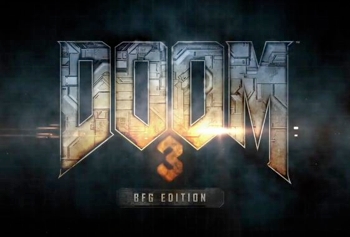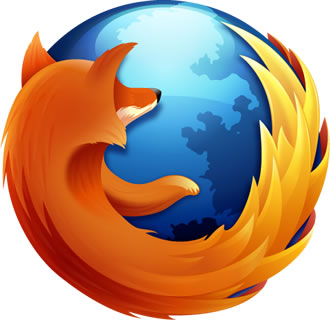
Apple has democratized textbook publishing, enabling indie publishers like School Yourself to offer interactive iBook textbooks for the iPad, despite the "Big Three" publishers that dominate the textbook market.
Tablets are going to change the way students interact with textbooks, much in the same way that your Popular Science or Wired magazine apps have been reimagined for a touchscreen device. As classrooms are adopting new technologies, it’s becoming incredibly normal for students to tote tablets and smartphones to school, and the reality is that the next revolution in education will be marked by these devices. Among the first companies modernizing textbooks is School Yourself – a four person startup co-founded by Zach Wissener-Gross, a PhD graduate from Harvard and MIT alumnus, and ex-Googler John Lee, who are envisioning and building digital interactive textbooks for tablets in a way that educators have not yet seen before.
If you can think back to the days when you were using a textbooks, a couple of things you might remember are the jacked up prices and the eye strain of pouring over thousands of lines of text. School Yourself’s textbooks are free or just $4.99, and use the haptic and visual learning styles backed by a trio of core features you won’t find in hardcover and paperback. Students will find short 45 second videos followed by a question, text, a scratch pad to manipulate interactive modules, and a hint system that walks students through problems step-by-step.

Digging deeper into School Yourself’s system, every time a student interacts with the textbooks their progress and “signals” are being logged. What this means is that School Yourself is able to see the questions that students are getting right and wrong, the time they spend on the questions, trends, and other signals and data. By tracking progress, the team can know how each user is learning and will customize its textbooks to fit their studying habits.
“When a user is touching the screen, and working in a sandbox where they can build any function they want, we can collect a lot of data from the user than just if they get a question right or wrong. We can see if the user learns better by correlating how well they do on the questions, if they have this more hands on experience, or if they prefer to just watch videos, or if they just want to read the text,” says Lee.
Apple, after the launch of its line of iPads and iPad mini, promoted iBooks to educators and opened up the doors to a brand new distribution channel for textbooks. What Apple has done is democratize the textbook industry, although few like School Yourself have stepped up to the challenge. To give you a cursory glance at the state of the textbook industry today, there are three major players that account for 90 percent of the textbook market. These are Houghton Mifflin Harcourt, McGraw Hill, and Pearson. If you browse to Apple’s iBook textbook page, you’ll notice that these are the same publishers that Apple is prominently promoting as partners in its digital textbook program.

For corporations that push updated editions of $100 textbooks just about every year to encourage yet more purchases, it’s surprising that the “Big Three” jumped on Apple’s initiative from the get go. It’s uncharacteristic since these e-books cost just $14.99, a fraction of its hardcopies.
To Apple’s credit, it’s expected that it would promote the major publishers that know more than a thing or two about publishing credible textbooks. The top 25 publishers in the iBooks textbook store are from these major publishers. Teachers want the best for their students, and may rather not take a risk on a little known publisher. Currently there’s a huge range in the quality of textbooks, Wissener-Gross tells me. He offers an example of a class that collaboratively created a textbook. While it’s a fun exercise, unfortunately the textbook was riddled with mistakes.
“People are still exploring what you can do with iBooks. You get a real range in quality from these smaller publishers, whereas with the bigger ones, you know what you’re going to get,” says Wissener-Gross. The market is still in its infancy and slowly maturing.
What users are paying for in the major publisher’s e-textbooks are essentially static pages – in other words it’s like reading a paper textbook but on an iPad. “When it comes to the interactive components, they’re falling behind,” says Wissener-Gross. But where the Big Three are inadequate, independent publishing startups like School Yourself is compensating.
It’s worth noting that Houghton Mifflin, accounting for 40 percent of the K-12 education sector filed for Chapter 11 bankruptcy in May, and Wissener-Gross has an inkling that the publisher partnered with Apple as a way to find its footing in the changing $10 billion dollar textbook industry (Association of American Publishers).

School Yourself isn’t necessarily a “substitute,” a word that Wissener-Gross is not a fan of, for textbooks but rather supplementary to a student’s curriculum. That said, it seems like this independent publisher is doing a far better job with developing a superior experience and material suited for the iPad. The preliminary reviews for School Yourself’s two textbooks out on iTunes appear to be overwhelmingly positive with 4.5 stars and its users credit the cost and interactive modules. It also helps that the team members responsible for the content come from backgrounds in teaching at MIT and Harvard. The Big Three publishers however seem to be a hit or a miss with their textbook ratings ranging between 2 and 4 stars with the majority of issues stemming from constant crashes, typos, and the fact that these iBooks aren’t meant for substituting an in-class textbook.
The fate of independent iBook textbook publishers like School Yourself is at this point partially in the hands of Apple. Much like how mobile apps that get featured in the App Store see tremendous growth, it’s critical to be among Apple’s featured textbooks. “Apple is in a position of power right now, certainly in the iBooks market,” says Wissener-Gross. How Apple vets submitted textbooks works on a binary scale, he explains. A publisher will submit a textbook and Apple will decide whether to include the textbook in the Featured list.
At the same time, School Yourself’s Software Architect Kenny Peng tells me that Apple offers a flexible distribution model that enables customers to find material easily. Smaller publishers are no longer forced to pitch the Big Three on textbooks to gain access to the consumers.
It also helps that Apple has been actively partnering with schools around the U.S. to distribute iPads. At the iPad Mini unveiling, Apple revealed that the full-sized iPad is already being used in 2,500 classrooms. Wissener-Gross was informed by a teaching colleague that Apple was distributing “bundles” of iPad Minis in Long Island, New York.
In retrospect, looking at the textbook market from the consumer’s perspective, Peng adds, “Education as a space is becoming commoditized and accessible to anyone that’s interested.” Students (and even non-students) can quickly gain access to a plethora of affordable auxiliary material in just minutes.
For now, School Yourself is on the verge of launching its Calculus book, which would be the third math textbook that the startup has published. It does have intentions of delving into other types of subjects. The next slate textbooks will be in physics considering the team’s extensive background in the subject, and Biology, Chemistry, even engineering are other subjects that School Yourself has been thinking over. The team is working on textbooks for Android and Kindle Fire devices as well.


























 December Bug: See above. Android 4.2 completely
December Bug: See above. Android 4.2 completely 




